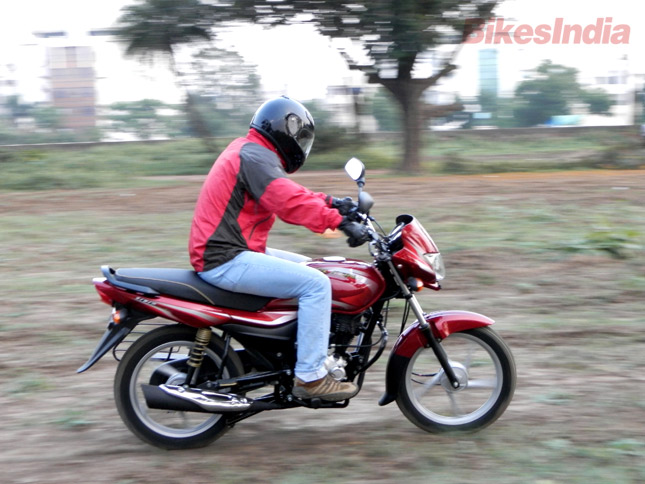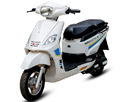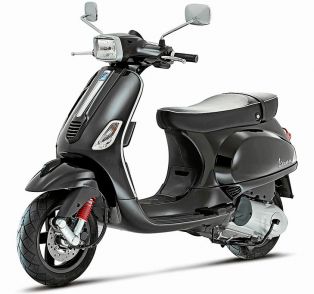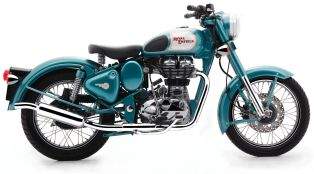There are lots of factors that either directly or indirectly affect the handling of your ride. Apart from your skills to handle motorcycle or any two wheeler there are numerous factors that involve in ride quality and handling of your ride. Let's check it out what are those factors and how they affect the handling.


1. Weight distribution:
Handling is improved by low center of gravity, this is why sports cars have a light roof or no roofs as seen on the Formula1 cars. Front heavy vehicles tend to under steer where rear heavy vehicles tend to over steer. This can be compensated by using wheels and tires proportional to the weight carried by each end.
2. Polar Moment Of Inertia (PMOI):
Roll Polar M.O.I increases the time taken to settle down and follow the steering after cornering. It depends on square of height and width. Higher the height and width decrease the handling quality.
Yaw Polar M.O.I tends to keep the direction of the vehicle changing at a constant rate and its higher value makes the vehicle slower at tight curves. The Pitch M.O.I contributes to bumper steer. Thus a heavy bumper should be avoided in four wheelers.
3. Suspension:
The suspension characteristic such as the spring rate, damping etc. change with the wheel travel, vibration modes and flexibility affect the steering. Heavy loads can also affect the steering handling.
4. Rigidity of the frame:
A rigid frame helps in better handling of the vehicle, since it helps in proper balancing of the mass, and helps in cornering, this is the reason why frames like Trellis and Perimeter is preferred in high performance bikes.
5. Unsprung weight:
The unsprung weight is cushioned from the road by the tires, which have limited internal damping. Thus the wheel bounce is poorly damped by the shock absorbers due to which high unsprung weight reduces road holding capacity and increases unpredictable changes in the direction on rough roads.
6. Wheelbase and Wheel track:
A large wheelbase increases resistance to front or back weight transfer, while sideways wheel resistances is influenced by wheel track.
7. Wheels and Tires:
Larger tires, softer compounds, and more stiff chords increase the road holding and improve the stability. Increasing the tire pressure reduces the road contact and reduces friction, but due to uncertain road conditions it is always safe to set the prescribed tire pressure.
8. Steering:
Rake and Pinion is considered the best for handling. Backlashes and excessive friction in the steering mechanism also affect the vehicle handling adversely. The steering efforts depend on the downward force on the steering types and on the radius of contact patch.
9. Throttle and Brakes:
Weight transfer takes place in rearward direction during acceleration, which would cause over-steer. This is opposite of the tendency of the vehicle to under-steer during curves. Using low gears while going up hill may lead to over steer. During braking forward weight transfer would take place leading to over-steer. Most modern vehicles counter this by varying brake distribution in some way.
10. Aerodynamics:
Aerodynamic forces are proportional to the square of the air speed. Cars are usually designed aerodynamically to compensate for the inherent increase in over-steer as cornering speed increases due to smaller turning radius. Thus it is the natural tendency of the vehicle to under-steer while entering corners at low speeds and over-steer at high speed entries. Thus to avoid this the car manufacturers install a spoiler at the rear of the vehicle.
The same kind of spoilers are seen on the MotoGP bikes nowadays which are best known as "Winglets" due to their tiny wing like design structure.
By: Rishath Suresh
Handling is improved by low center of gravity, this is why sports cars have a light roof or no roofs as seen on the Formula1 cars. Front heavy vehicles tend to under steer where rear heavy vehicles tend to over steer. This can be compensated by using wheels and tires proportional to the weight carried by each end.
2. Polar Moment Of Inertia (PMOI):
Roll Polar M.O.I increases the time taken to settle down and follow the steering after cornering. It depends on square of height and width. Higher the height and width decrease the handling quality.
Yaw Polar M.O.I tends to keep the direction of the vehicle changing at a constant rate and its higher value makes the vehicle slower at tight curves. The Pitch M.O.I contributes to bumper steer. Thus a heavy bumper should be avoided in four wheelers.
3. Suspension:
The suspension characteristic such as the spring rate, damping etc. change with the wheel travel, vibration modes and flexibility affect the steering. Heavy loads can also affect the steering handling.
4. Rigidity of the frame:
A rigid frame helps in better handling of the vehicle, since it helps in proper balancing of the mass, and helps in cornering, this is the reason why frames like Trellis and Perimeter is preferred in high performance bikes.
5. Unsprung weight:
The unsprung weight is cushioned from the road by the tires, which have limited internal damping. Thus the wheel bounce is poorly damped by the shock absorbers due to which high unsprung weight reduces road holding capacity and increases unpredictable changes in the direction on rough roads.
6. Wheelbase and Wheel track:
A large wheelbase increases resistance to front or back weight transfer, while sideways wheel resistances is influenced by wheel track.
7. Wheels and Tires:
Larger tires, softer compounds, and more stiff chords increase the road holding and improve the stability. Increasing the tire pressure reduces the road contact and reduces friction, but due to uncertain road conditions it is always safe to set the prescribed tire pressure.
8. Steering:
Rake and Pinion is considered the best for handling. Backlashes and excessive friction in the steering mechanism also affect the vehicle handling adversely. The steering efforts depend on the downward force on the steering types and on the radius of contact patch.
9. Throttle and Brakes:
Weight transfer takes place in rearward direction during acceleration, which would cause over-steer. This is opposite of the tendency of the vehicle to under-steer during curves. Using low gears while going up hill may lead to over steer. During braking forward weight transfer would take place leading to over-steer. Most modern vehicles counter this by varying brake distribution in some way.
10. Aerodynamics:
Aerodynamic forces are proportional to the square of the air speed. Cars are usually designed aerodynamically to compensate for the inherent increase in over-steer as cornering speed increases due to smaller turning radius. Thus it is the natural tendency of the vehicle to under-steer while entering corners at low speeds and over-steer at high speed entries. Thus to avoid this the car manufacturers install a spoiler at the rear of the vehicle.
The same kind of spoilers are seen on the MotoGP bikes nowadays which are best known as "Winglets" due to their tiny wing like design structure.











